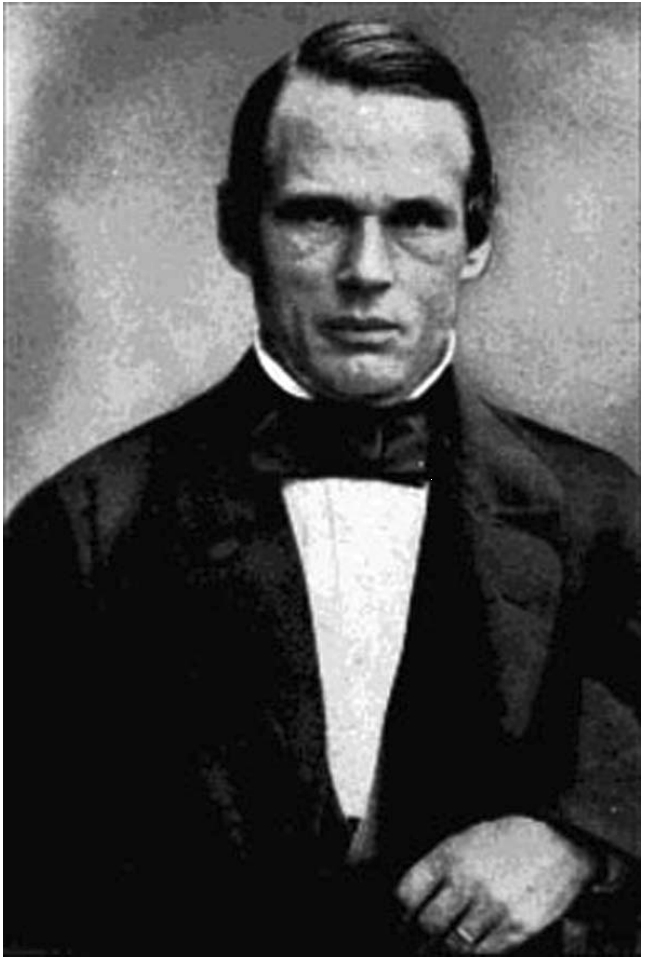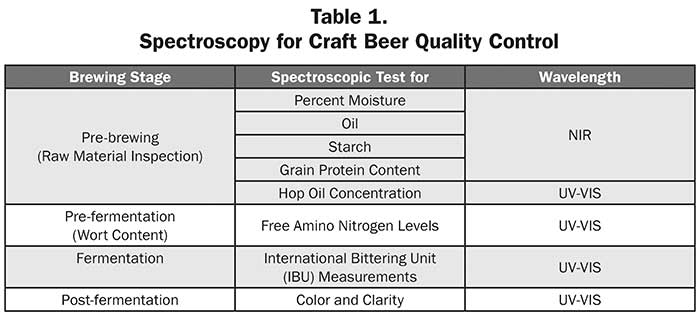
Today is the birthday of Anders Jöns Ångström (August 13, 1814–June 21, 1874). He “was a Swedish physicist and one of the founders of the science of spectroscopy.” The Ångström unit (1 Å = 10−10 m) in which the wavelengths of light and interatomic spacings in condensed matter are sometimes measured are named after him. Various types of spectroscopy are employed in the brewing industry.

Here’s a partial biography of Ångström from Wikipedia:
Anders Jonas Ångström was born in Medelpad to Johan Ångström, and schooled in Härnösand. He moved to Uppsala in 1833 and was educated at Uppsala University, where in 1839 he became docent in physics. In 1842 he went to the Stockholm Observatory to gain experience in practical astronomical work, and the following year he was appointed keeper of the Uppsala Astronomical Observatory.
Intrigued by terrestrial magnetism he recorded observations of fluctuations in magnetic intensity in various parts of Sweden, and was charged by the Stockholm Academy of Sciences with the task, not completed until shortly before his death, of working out the magnetic data obtained by HSwMS Eugenie on her voyage around the world in 1851 to 1853.
In 1858, he succeeded Adolph Ferdinand Svanberg in the chair of physics at Uppsala. His most important work was concerned with heat conduction and spectroscopy. In his optical researches, Optiska Undersökningar, presented to the Royal Swedish Academy of Sciences in 1853, he not only pointed out that the electric spark yields two superposed spectra, one from the metal of the electrode and the other from the gas in which it passes, but deduced from Leonhard Euler’s theory of resonance that an incandescent gas emits luminous rays of the same refrangibility as those it can absorb. This statement, as Sir Edward Sabine remarked when awarding him the Rumford medal of the Royal Society in 1872, contains a fundamental principle of spectrum analysis, and though overlooked for a number of years it entitles him to rank as one of the founders of spectroscopy.

This is the general definition of spectroscopy from Wikipedia:
Spectroscopy is the study of the interaction between matter and electromagnetic radiation. Historically, spectroscopy originated through the study of visible light dispersed according to its wavelength, by a prism. Later the concept was expanded greatly to include any interaction with radiative energy as a function of its wavelength or frequency. Spectroscopic data are often represented by an emission spectrum, a plot of the response of interest as a function of wavelength or frequency.
This abstract from the 2006 paper “Applications of Vibrational Spectroscopy in Brewing” gives an overview of their use by brewers.
The purpose of this chapter is to compile the literature concerning the applications of near‐infrared (NIR), mid‐infrared and Raman spectroscopy in the brewing industry. All these three techniques share the advantages that they are rapid, can be noninvasive and allow direct observation of specific molecular species. As for barley, many researchers have used the NIR reflectance on whole grains in malt evaluation. The NIR determination of α/β‐acids and hop storage index in baled hop samples is reported. NIR spectrophotometric methods have been developed for the determination of yeast concentration and activity in beer making. In addition to the applications in the laboratory of quality control, the overview concerns also the applications of infrared and Raman spectroscopy in monitoring of operation and process control at the essential steps of mashing and wort fermentation in brewery. The results obtained with a short wave NIR spectrophotometer are presented in comparison with long wave NIR spectrophotometers.
Brewers use spectrometers to measure a number of QC items throughout the brewing process.

To get a sense of how much spectrometers are used, this article promoting StellarNet, a company selling them, entitled Spectroscopy Prospects Brewing, is pretty thorough.

